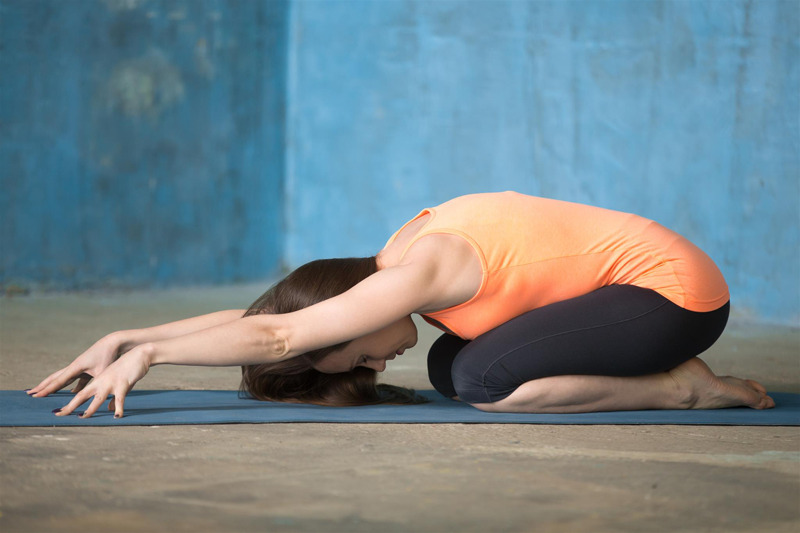
How Yoga Can Help Heal Trauma
5th October 2018
Common Yoga Mistakes and How to Fix Them
11th October 2018Yoga for Fasting

Whether it’s for religious or health reasons, many people choose to fast from time to time. Although fasting can benefit us in the long run, it can often make us feel fatigued and unwell during the process – especially if we don’t follow a strict plan. When feeling this way, many people are unsure whether to carry on with their yoga routine. Thankfully, it’s perfectly safe to continue practising throughout your fast, providing that you listen to your body. In fact, some asanas can amplify the results of your fast by cleansing your system. To allow the toxins to exit your body, make sure to wear a pair of breathable yoga shorts. In this article, we explore yoga for fasting in more detail.
Types of Fasting
There are various different types of fasting. Some people may choose to remove food from their diet but continue to drink liquids. Others may choose the more severe option and abstain from both food and fluids. The length of the fast can range from just a few hours to several days. Typically, it’s perfectly safe for the average person to do a water fast for 3-5 days. However, if you’re interested in more extreme types of fasting, it’s worth talking to your GP before beginning. This will allow you to make the necessary preparations to ensure you stay healthy.
Benefits of Fasting
People choose to fast for a number of different reasons. One of the most common reasons is to cleanse the body; also known as autolysis, the detoxification process usually begins 24 hours after you begin the fast. Through self-digestion, the body gets rid of damaged, diseased, and dead cells. Additionally, fasting helps to eliminate toxins from the body and gives the digestive system a chance to rest and recuperate. This means that the energy that usually goes into digestion can be used in other areas of the body. Because of this, it’s common to feel more energetic after fasting for a few days.
Other people choose to fast to enhance their spirituality. It is believed that fasting can improve focus by increasing your awareness. Over time, it can also become easier to enter a meditative state. Fasting can also help you to improve your willpower. Eventually, you will develop the ability to complete anything you put your mind to. Restricting your eating habits can teach you to distance yourself from food and see it as an object. With time, you’ll be able to ignore your body’s cravings for the taste of food and learn to eat only when your body needs it.
Best Postures for Fasting
As long as you practice with care, it is not necessary to change your routine. However, certain asanas can enhance the results of the fast by improving your digestion. Helping your body to detox, the postures below can be practised to complement your fasting experience.

Bridge Pose
To practice bridge pose, lay on your back with your knees bent. Next, relax your arms and allow them to rest by the sides of your body. Tuck your chin into your chest and engage your abdominal muscles. Finally, lift your buttocks and back of the ground to create a bridge. You are in Bridge Pose. Hold the posture for around 8 breaths before lowering yourself back down to the mat.
Forward Fold
To practice forward fold, stand tall with your feet underneath your hips. Next, bend at the waist and lower your torso toward the mat. To minimise pressure on your lower back, make sure to bend your knees throughout the pose. When you can, grab your ankles and let your upper body hang toward the ground. You are in Forward Fold. Hold the asana for around 30 seconds whilst breathing deeply. To take the posture to the next level, slowly sway your torso from side to side to increase the stretch.
Cobra Pose
To practice Cobra Pose, begin by lying on your stomach. Your legs should be extended with the tops of your feet touching the mat. Next, place your hands directly under your shoulders. When you’re ready, draw your elbows back and press the tops of your feet into the floor. Remain in this position for a couple of seconds whilst breathing deeply. Next, straighten both your arms to raise your chest off the mat. Finally, press your tailbone into the ground and engage your buttocks. You are in Cobra Pose. Hold the posture for around 5 breathes before releasing the backbend.
Child’s Pose
To practice Child’s Pose, start by kneeling on your mat. Next, take a deep breath in as you sit back on your heels. As you exhale, walk your hands out in front of you until your chest is touching the mat. If it is comfortable, rest your forehead on the mat and relax your arms by your sides. You are in Child’s Pose. Hold the asana for around 1 minute, or as long as it feels comfortable to do so.
Seated Spinal Twist
To practice Seated Spinal Twist, sit on the floor with your legs extended. Next, bend your right knee and place the bottom of your foot on the mat. When you’re ready, bend the opposite knee and place your left foot under your right leg. If possible, try to touch your left heel against your right buttock. Finally, place your right palm on the mat just behind your bottom and move your left elbow to the outside of your right knee. You are in Seated Spinal Twist. Hold the asana for around 5 breaths before repeating on the opposite side. To increase the stretch, twist your body a little more with each breath.
In Summary
Whether you’re fasting to cleanse the body or improve weight loss, use the asanas above to enhance the effects. To allow the toxins to exit the body, it’s important to wear a breathable yoga top throughout your practice.

